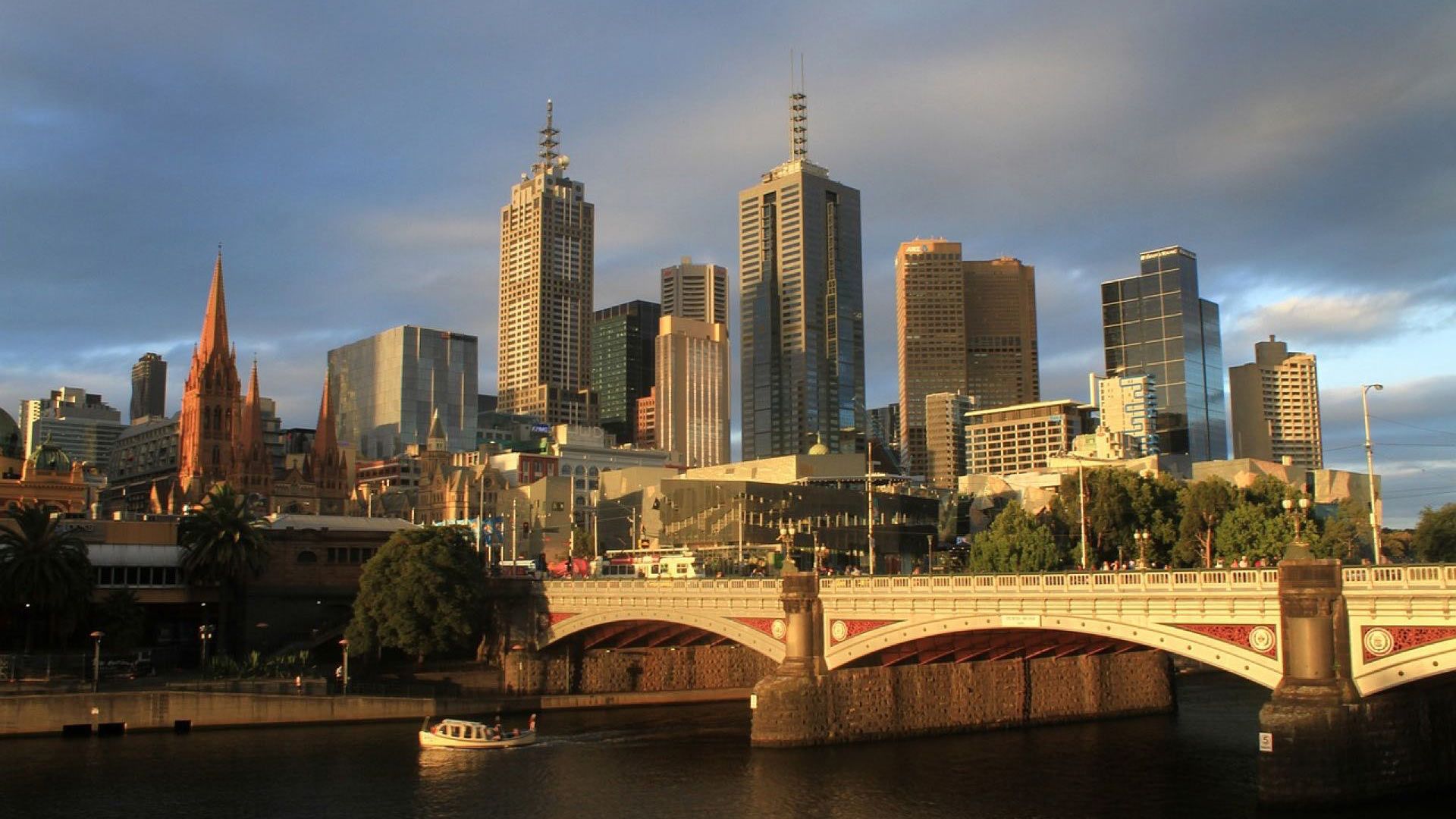Australia
Melbourne
Melbourne currently holds the “world’s most liveable city” status, and the sunny Australian landscape certainly helps. Faced with the millennium drought, Melbourne had to find a way to effectively approach the challenges of climate change and a growing population whilst maintaining their liveable city status.

4 Levels of Action - Melbourne’s Progress Towards the Principles
Regenerative Water Services
• Environmental flow regulations administrated by State and Federal agencies.
• Third pipe schemes using recycled water through new housing developments.
• Public and business water efficiency education campaigns.
• Labelling and building codes
• Renewable energy from wastewater treatment: by-products and mini hydros.
• Extensive wastewater recycling schemes
• Stormwater harvesting and reuse projects managed by council, water authorities and private agencies.
• Rainwater tank incentives as part of the building code.
• IWM forums and plans at regional and local scales being developed as part of the new Water Plan.
• IWM plans tailored to meet the particular needs of local areas.
Water Sensitive Urban Design
• State Planning Scheme for best practice stormwater management
• Infill developments captured in inner city councils via local planning provisions
• Pilot project to design or retrofit urban space
• On-lot rainwater tanks and stormwater harvesting system
• Urban planning and design guidelines to provide for blue-green corridors
• Wetlands, raingardens and swales included in new development for water quality improvement
• Improved accessibility to waterways
• Implementing recirculation system in public fountains
• WSUD to support increases in tree canopy cover and reduce UHI
• Testing of permeable paving and green roofs for Australian conditions
• Passive irrigation of street trees using structural soils
Basin Connected Cities
• Desalination plant
• Annual Water Outlook
• Investment in increasing irrigation efficiency with a share of water savings distributed to urban areas at times of critical human need
• Secure, limited public access forested catchments supply most of Melbourne’s drinking water
• All hazards approach with strong connectivity across institutions and consistent framework
Water-Wise Communities
• Education campaign on wise water use & Target 155
• Need to increase public understanding of the whole water cycle
• On-going capacity and knowledge building and innovation programs
• Urban renewal sites, e.g. Arden Macaulay and Fishermans Bend
• New intergovernmental committee overseeing Arden Macaulay
• State and local government have progressive water management policies
• Leaders at three levels of government conscious of climate and population growth challenges and of maximising benefits with lease community cost
City Water Stories
Amsterdam - Netherlands
Since a cloudburst in the summer of 2014 and many more severe cloudbursts since then in other regions of the Netherlands, the urgency for a way to adapt this buzzing international city grew. Hence Waternet, the well-known innovative water utility of Amsterdam and its surroundings, created Amsterdam Rainproof.
Brisbane - Australia
In the past two decades, Brisbane has experienced the millennium drought (1995 – 2009) and two significant floods (2011 and 2013), and as a subtropical city it is also affected by frequent and severe storms.
Copenhagan - Denmark
Copenhagen is a northern harbour city which has experienced a number of severe rainfall events, namely cloudbursts, with the largest pouring down in July 2011. The damages amounted to around 1 billion US dollars, and climate projections predict even larger events in the future. Protecting citizens and businesses from the impacts of climate change, while also continuing to secure high quality drinking water for a growing population are the concerns related to water.
Dakar
Dakar’s urban population is exploding with an annual growth rate of 2.5% and urbanisation rate of 97.2%. This massive urban expansion leads to overpopulation and construction in restricted areas, creating illegal slums without planned infrastructure including proper drainage and sewage systems.
Gothenburg
Built into a low-lying swamp area near the Göta River estuary, Gothenburg finds itself in a strategic yet vulnerable place. Flood risks and sea level rise are the two most important challenges the city is now facing.
Kampala
Kampala is Uganda’s largest city and is located at the periphery of Lake Victoria, Africa’s largest fresh water lake. Kampala is rapidly growing, with economic opportunities driving the rural-urban migration, and consequently increasing the rate of informal settlements.
Kunshan
Due to the city’s low-lying nature, Kunshan, a city in China’s Jiangsu Province, has faced frequent inundation throughout time.
Lyon
Lyon, the beautiful French city at the intersection of the Rhone and Saone rivers, is expecting some changes.
Perth
Perth is on the frontier of extremes, isolated from all other major cities in Australia on the largely wild west coast. Perth’s declining water availability from both surface and groundwater sources is well recognised.
Shenzhen
The city of Shenzhen was established in 1979, and in a swift 36 years, this tiny border town of just over 30,000 people has grown into a modern metropolis. However, rapid urbanization has brought with it many challenges, including serious water crises in the form of stormwater pollution and flood risks.
Singapore
This international port city is no stranger to shifting tides. With limited land to collect and store rainwater, Singapore has faced drought, floods and water pollution in their early years of nation building.
Sydney
The millennium drought affected all of Australia, and certainly it’s star city Sydney. This drought caused serious water security concerns for Sydney in the past, and further strain on the current water supplies is expected into the future.
Xi'an
Xi’an is located in the middle of the Yellow River basin, one of the largest river basins in the world. Even with all this water around, the city still faces severe water shortages for a growing population.
Subscribe to our newsletters
IWA and sector updates
to your inbox
Follow us